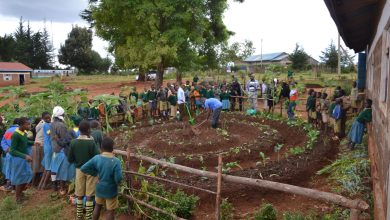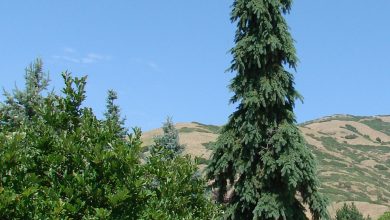Sow Basil: [Planting, Care, Irrigation, Substrate and Pests]
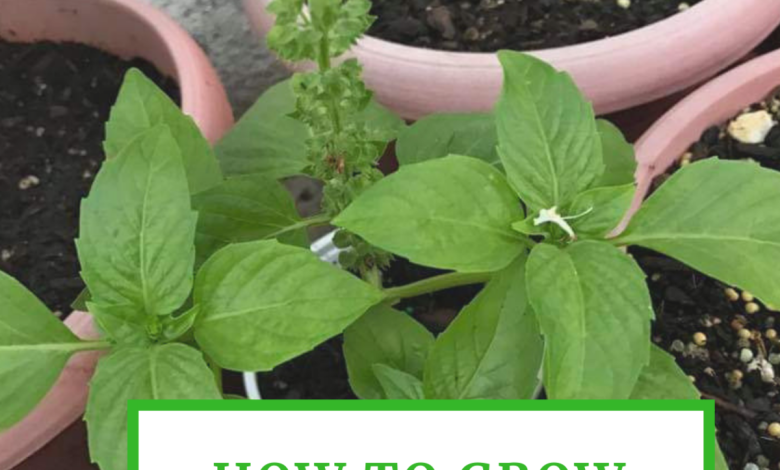
Did you know?I love basil. And I love growing my own basils.
Why? The truth is, she wouldn’t know where to start. But,I give you some reasons:
- It has medicinal properties.
- It acts as a repellent for mosquitoes and other insects.
- It’s pretty and it smells good.
Do you need more reasons?
Sow Basil Step by Step:
- When? In warm areas in February and in cold areas from April.

- Where? Area that receives a lot of sunlight. Avoid very cold climates.
- Collection time? 40 days.
- How do we prepare the land? Slightly acid substrate, pH between 5.7 and 6.2. Soil that drains well.
- How do we pay? Organic matter (animal droppings and leaf debris). Not in excess.
- How do we water? Perfect, drip.
- How often do we water? Abundant and constant. Without flooding. In summer daily. It requiresconstant humidity.
- How do we sow? In pot 15cm deep and 15cm in diameter. In soil at a depth of 1 cm. Distance between each seed about 2cm.
- How do we harvest? Cut off the newest and least mature leaves. Prune frequently.
- What do we associate it with? Garlic, tomato, aubergine, cucumber and pepper.
- What do we NOT associate with? Nothing in general.
- Most common pests and diseases? White fly, leafminer, thrips, snails and fungi.
Basil is one of the easiest aromatic herbs to grow, in addition to the fact that it brings us great benefits.
Growing it can be very rewarding since it not only allows us to take advantage of the medicinal properties it offers, but at the same time we will be able to enjoy its unique flavor and aroma in a wide variety of culinary recipes.
If one of your purposes is to start your own urban, home or organic garden, growing basil becomes an ideal alternative. Besides that it is a plant that grows fast.
You will find that it is very easy to grow and does not require much space. In addition, its appearance is pleasing to the eye, so it will undoubtedly enhance the place where you place it, whether in your home, office or in your own garden.
As if that were not enough, basil also has the property of repelling mosquitoes, moths and many other annoying and harmful insects.
There is a great diversity of basil varieties, each with its own unique flavor and aroma. Try to meet as many as you can and encourage yourself to cultivate the ones that most attract your attention.
Do not wait more!
Did you know…In India, basil is often grown near temples and homes, where it is used as a disinfectant and air freshener.
Necessary conditions for growing basil
To plant basil we must pay attention to the following requirements:
the fertilizer
 Requires monthly fertilizer, with low humidity. A good dose of nutrients ensures a good harvest. It must be rich in humus.
Requires monthly fertilizer, with low humidity. A good dose of nutrients ensures a good harvest. It must be rich in humus.
Compost Tips
The land must be fertilized before planting, without excess fertilizers so as not to sacrifice the flavor of the leaves.
You can increase the nutrients and quality of the soil with a compost based on plant remains and animal excrement.
If you prefer, you can use leaf soil, which forms from the remains of fallen leaves when mixed with the soil.
Irrigation
It requires humidity and constant watering, since it is a plant that dehydrates easily, especially in very hot weather. The land must be watered, avoiding waterlogging.
Did you know that basil…It is the main ingredient of the famous pesto sauce.
Irrigation Recommendations
The ideal is to water them frequently, but in small quantities so as not to form puddles on the ground.
Always keep in mind that an excess of water can drown your plant, since the roots do not support very humid soils well.
You can opt for drip irrigation, so that you keep the soil with a good degree of humidity, but not excessive.
Make sure the soil is well drained. A good idea to make it easier for water to drain properly is to mulch with mulch or comfrey leaves.
It is recommended to water directly on the ground, without wetting the leaves.
Water your plants in the morning, so the water has time to nourish the soil and evaporate. At night it is more likely to stagnate.
the substrate
 The soil where basil is grown should be loose, well-drained, and rich in organic matter.
The soil where basil is grown should be loose, well-drained, and rich in organic matter.
It is preferable that the soil is deep and has good ventilation, although care must be taken that there are not strong enough winds, since they can break the leaves of the basil when it has grown.
Basil is preferably planted in seedbeds, as it is widely used as a condiment in the kitchen, as well as being better protected from frost and other inclement weather.
However, we can also do it directly on the ground.
The indicated pH can be slightly acidic, between 5.7 and 6.2
Substrate Tips
Make sure your soil has a high content of organic matter. This improves the soil’s ability to harness moisture.
If you sow in seedbeds, the most recommended substrate for planting basil is the one called «for seedbeds», although the «substrate for indoor plants» also works.
It is not necessary to pay in excess. Applying a small amount before planting is sufficient. Then, it can be fertilized once a month or every two months, depending on the conditions of the land.
The substrate must be well aerated and have good drainage.
If you have drainage problems add sand, perlite or vermiculite.
Climate
Being excessively sensitive to frost, basil is best grown in a warm climate.
Its cultivation is recommended during the spring. It can be sown from February in warm areas, and from April in colder regions.
Climate Recommendations
If you live in a cold climate, it is best to grow basil indoors.
They prefer temperatures between 15 and 20°C, although some varieties can withstand slightly higher temperatures.
Its development stops completely below -2 ºC
It is favorable for their growth to place them in a well-lit place, with direct sun. However, they tolerate a little shade during the day well, as long as it is not absolute.
Before planting the basil
Seeds
 Basil seeds can be collected in the fall and stored in a paper bag, or purchased from a garden store.
Basil seeds can be collected in the fall and stored in a paper bag, or purchased from a garden store.
Choose the desired variety, or you can plant several at once. A combination of various types of basil will make your garden look amazing.
Temperature
The ideal temperature should be 20 ºC.
pH
Check the pH of the soil. The range must be between 5.7 and 6.2
Pass
Generally speaking, planting basil is easy and unproblematic. A soil with enough nutrients will suffice.
The land must be fertilized before planting, without excess fertilizers so as not to sacrifice the flavor of the leaves.
Try not to overpay.
Where to plant basil?
 The land must be moist and have good drainage to avoid waterlogging.
The land must be moist and have good drainage to avoid waterlogging.
It is recommended to sow basil in seedbeds or pots. The seeds can also be sown directly in the garden or orchard.
The pot should be at least 15 centimeters in diameter to have enough planting surface, so that the seeds do not germinate too close together.
The minimum depth must also be 15 cm.
To prepare the containers, fill them with a mixture of equal parts perlite, vermiculite, and peat moss.
Then, lightly press down on the mixture to remove any air pockets. Moisten the mixture with water to promote the ideal environment for the seeds to germinate.
How to grow basil
When?
It is recommended to sow from February in warm areas and from April in colder regions. Not too much later so you can get the most out of your crop and make your leaves last as long as possible.
It is an annual plant and usually dies in autumn, with the arrival of low temperatures.
The basil planting process
- The seeds can be sown at a depth of 1 cm. They usually take between ten and fifteen days to germinate.
- It is advisable to dig holes spaced apart from each other. Minimum 20cm between each one so that the basil plant can develop well and have enough space.
- If what you want is to grow basil at home, then you will have no choice but to do it in pots. This is not bad, just the growth path will be more limited.
- Be sparing with the number of seeds you sow, as basil tends to germinate very well and quite quickly. You may have to give plants away so as not to overcrowd your garden.
- The distance between each seed can be about 2cm. With this we will ensure that the seedlings grow healthy and strong and do not compete for light between them.
- After placing them in the ground, cover the seeds with a thin layer of soil. It is important to keep the seedbed in the shade and with constant humidity until it is time to germinate.
- Water carefully with a watering can to prevent the water pressure from burying them further. Subsequently, the frequency of irrigation will be adequate to keep the substrate always moist.
- If you plant in containers or pots, cover them with clear plastic wrap to keep them moist. Twice a day, remove the plastic wrap and spray the containers with more water.
- The germination temperature should not be less than 15ºC. You can also place the seedbed near the window to keep it ventilated.
- Once they have germinated, remove the plastic. Now, it is necessary to provide them with more light and heat. Place the seedbed where it receives direct sun. Continue to water the shoots twice a day, without letting the soil dry out.
- When the plants are about four inches tall and their leaves are mature (two to three pairs of leaves are present), it’s time to transplant them into a larger container. This will happen approximately 20 to 30 days after planting.
Did you know…In the love rituals of antiquity, if a woman adorned her head with a branch of basil, it was a sign of satisfaction at the courtship of her suitor.
To know more, you can see: Basil cuttings.
the transplant
Transplanting outdoors is usually done 2 months after sowing, leaving a space of 25 to 40cm. in all directions, from plant to plant.
If you want to keep your basil plant indoors, it is enough to move it to a larger pot, about 20cm deep and 20cm in diameter.
Transplantation must be done very carefully. Preferably in the morning, before the seedbed receives full sun, and also before watering the plants.
You have to be careful with the roots. You must deposit them in the hole you have dug without bending or mistreating them.
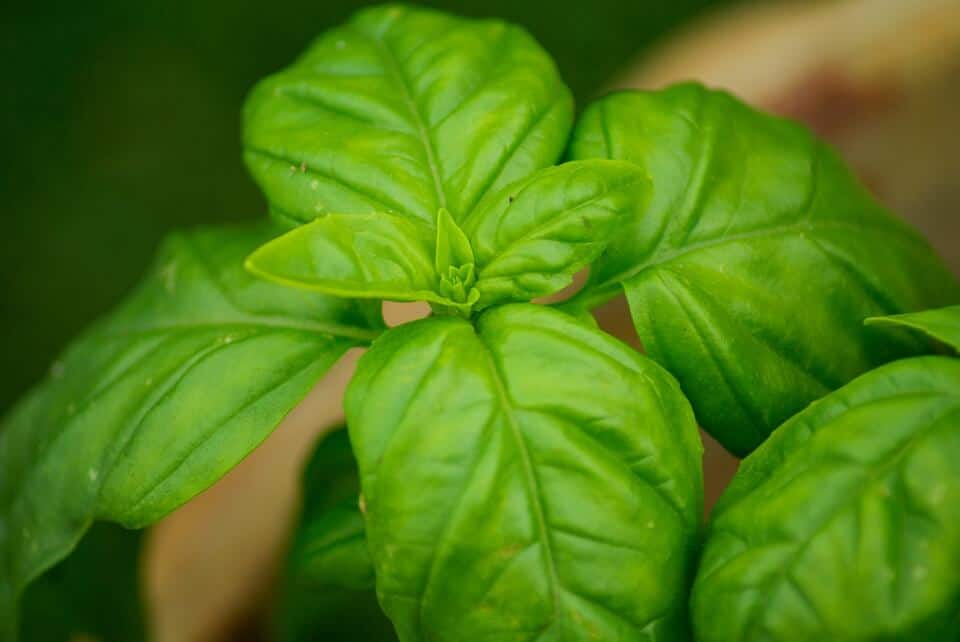 The planting depth will be the level at which its cotyledons are found. Once you have deposited it, add soil until it covers the stem a little and compact the soil a little to get rid of air pockets.
The planting depth will be the level at which its cotyledons are found. Once you have deposited it, add soil until it covers the stem a little and compact the soil a little to get rid of air pockets.
You can plant them individually or in a group of two or three plants per pot, trying to give them a good distance (10 to 15 centimeters) so that they do not compete with each other for sunlight.
As for the substrate chosen for its transplant outdoors, it can be a universal substrate or for outdoor plants, to which we can mix 20% garden soil or 10% clay field soil to give the substrate more freshness.
Finally, you must abundantly water the entire surface of the earth.
Harvesting and pruning basil
The harvest takes place 40 days after the transplant. Although its fresh leaves can be harvested throughout the year, the time when it offers the most benefits is just before flowering, which occurs between June and September.
If you wish to harvest it for culinary use, it is best eaten fresh or freshly cooked, as it loses its flavor quickly.
Similarly, if you want to dry them, you should also harvest them before flowering, as this is how they maintain their aromatic oils.
You must regularly prune the plant or it will develop very tall stems, but with few leaves.
If the plant grows very tall, remove the top leaves. You want to make it grow bushy instead of vertically.
Did you know…Due to its revitalizing effect, it is also attributed the property of increasing sexual vigor if consumed regularly.
Even if you won’t be using basil every day for cooking, remove some of the top leaves to promote growth.
You must cut the ends of its stems before flowering, and always above the bud so that it can continue to give leaves and do not lose their flavor. Don’t remove the leaves from the lower part of the stem or your plant will grow tall and spindly.
A common mistake is to cut the leaves closer to the base, as they are the most mature. On the contrary, it is best to cut the new leaves that come out, as they are fresher and have a better flavor.
In this way, you will ensure that the nutrients are used in the production of new leaves and do not promote the vertical growth of the plant.
Likewise, flowers must be avoided, because when this happens the nutrients go directly to them and not to the production of new foliage, which is the priority.
In addition, the flavor of the leaves decreases. However, if you want to produce seeds you can leave a few flowers. Remember that these usually occur when the days are hotter.
Conservation
Wash the leaves once cut.
When they have dried, you can store the ones you do not consume in the fridge, covering them with sheets of paper and placing them inside a well-closed glass container.
What associations are good?
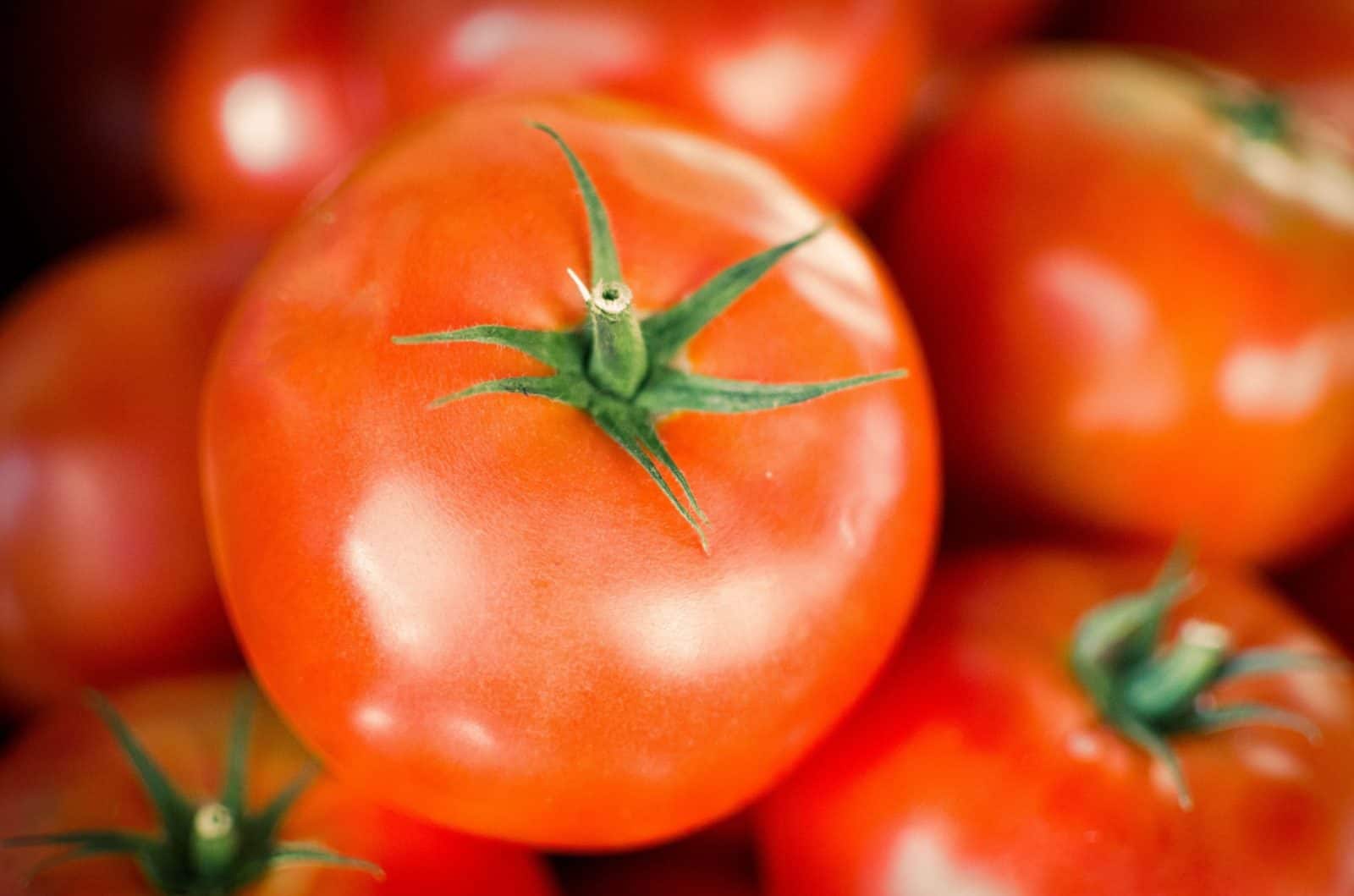 It pairs well with garlic, eggplant, cucumber, bell pepper, and tomatoes.
It pairs well with garlic, eggplant, cucumber, bell pepper, and tomatoes.
Its proximity to other plants will help keep insects and pests away.
Above all, it favors tomatoes, since it protects them from attacks by parasites and increases their flavor.
Bad associations?
In general, it does not get along badly with any other crop.
Common pests and diseases
Basil is not usually a victim of insects or pests. However, when it is watered poorly, there is a risk of snails appearing.
Other pests that can be affected by are:
thrips
They are flying insects that leave white spots with black dots on the leaves.
Remedy: Combined application of neem extract and potassium soap.
White fly
Remedy: spray the underside of the leaves with 1% potassium soap with rain or distilled water.
Minelayer
The leaf miner lives inside the leaves in its larval stage.
Remedy: apply neem extract to combat adults and Bacillus thuringiensis for larvae.
Fungi (Pytiuhm, Phytoptora)
Remedy: remove the affected areas. Use horsetail decoction as prevention.
Main properties of basil
Entre los múltiples beneficios que tiene esta hierba aromática podemos mencionar los siguientes:
- Su consumo ayuda a aliviar los gases intestinales, los dolores de estómago, las flatulencias y las indigestiones, ya que contiene sustancias que inhiben los efectos de aquellas enzimas que provocan inflamaciones en el sistema digestivo.
- Así mismo, promueve el buen funcionamiento intestinal.
- Ayuda a fortalecer el sistema inmunológico y a combatir infecciones en el organismo.
- Es revitalizante. Sirve para combatir tanto el agotamiento como la fatiga física y mental.
- Calma la tos.
- Posee propiedades antibióticas y elimina un amplio espectro de bacterias de diferentes especies.
- Reduce la oxidación del colesterol en el torrente sanguíneo, esto debido a sus compuestos antioxidantes.
- Ayuda a disminuir la fiebre ocasionada por ciertas infecciones.
- Relaja el sistema nervioso y purifica el organismo.
- Combate el estrés y es una excelente alternativa para disminuir la ansiedad y combatir el insomnio.
- It is a good alternative to clean teeth.
- It is an effective pain reliever. It can be used to reduce headache pain.
- Reduces inflammation.
- Repels mosquitoes, moths, aphids and other insect pests.
Main characteristics and types of basil
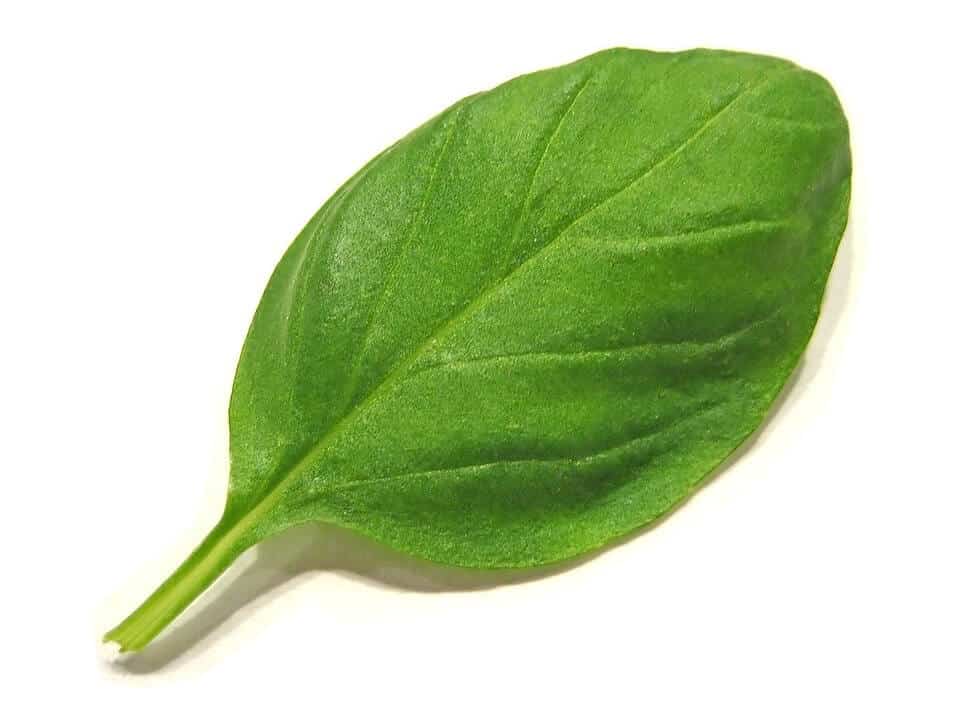 Basil, Ocimum basilicum, is an aromatic herb from the Lamiaceae family. It has an intense green color, with toothed leaves with a silky texture.
Basil, Ocimum basilicum, is an aromatic herb from the Lamiaceae family. It has an intense green color, with toothed leaves with a silky texture.
It is a sweet spice that in the kitchen is excellently combined with other vegetables, legumes and vegetables.
It is an annual plant. However, it is very sensitive to frost, which is why it prefers tropical climates.
It is native to Iran, India, Pakistan, and other regions of Asia, although it is famous as the main ingredient in the Italian pesto sauce.
Similarly, thanks to its intense aroma and color, it is one of the favorite ingredients to enhance the flavor of countless dishes, in addition to being very healthy and providing many benefits to humans.
Its flavor and aroma depend on the variety and its freshness. The same basil plant has a very different flavor if it is consumed fresh than if it is consumed dry.
It is also important to determine what type of basil you need.
Thus, we can name only some of the most common varieties of basil:
- Genovese basil, the most common: Its flavor combines very well with tomato, which is why it has become the main ingredient in a wide variety of sauces, including Italian pesto.
- Thai Basil: Features smaller, thinner leaves. It has an intense aroma of cloves, with some hints of mint and citrus. Pairs best with peanuts, hot and spicy flavors, and fish.
- Lemon basil: It has an aromatic component that is found in citrus fruits and that smells a lot like lemon. It is very fresh, with small and very thick leaves. It is recommended for use in salads and fresh waters. It also goes very well with curry and some fish.
- Lime basil: Like the previous one, it offers a citrus aroma, although it is closer to lime. It is ideal for preparing mojitos.
- Purple basil: Due to its color, it is also used as an ornamental plant. It has a flavor similar to the Genoese variety, although with a hue that evokes anise. It works very well when combined with tomato, Parmesan cheese, almonds and pine nut

![Photo of Planting Peppermint: [Care, Cultivation, Irrigation, Substrate and Pests]](https://www.complete-gardening.com/wp-content/uploads/2022/08/planting-peppermint-care-cultivation-irrigation-substrate-and-pests-390x220.jpg)
![Photo of List of [15 Indoor Plants Without Flower]: Examples and Care](https://www.complete-gardening.com/wp-content/uploads/2022/08/list-of-15-indoor-plants-without-flower-examples-and-care-390x220.jpg)
